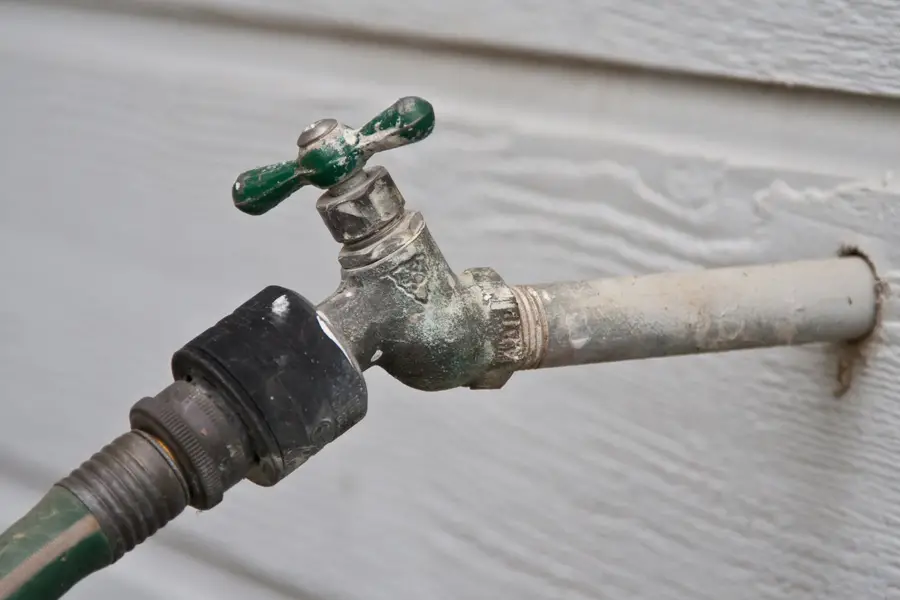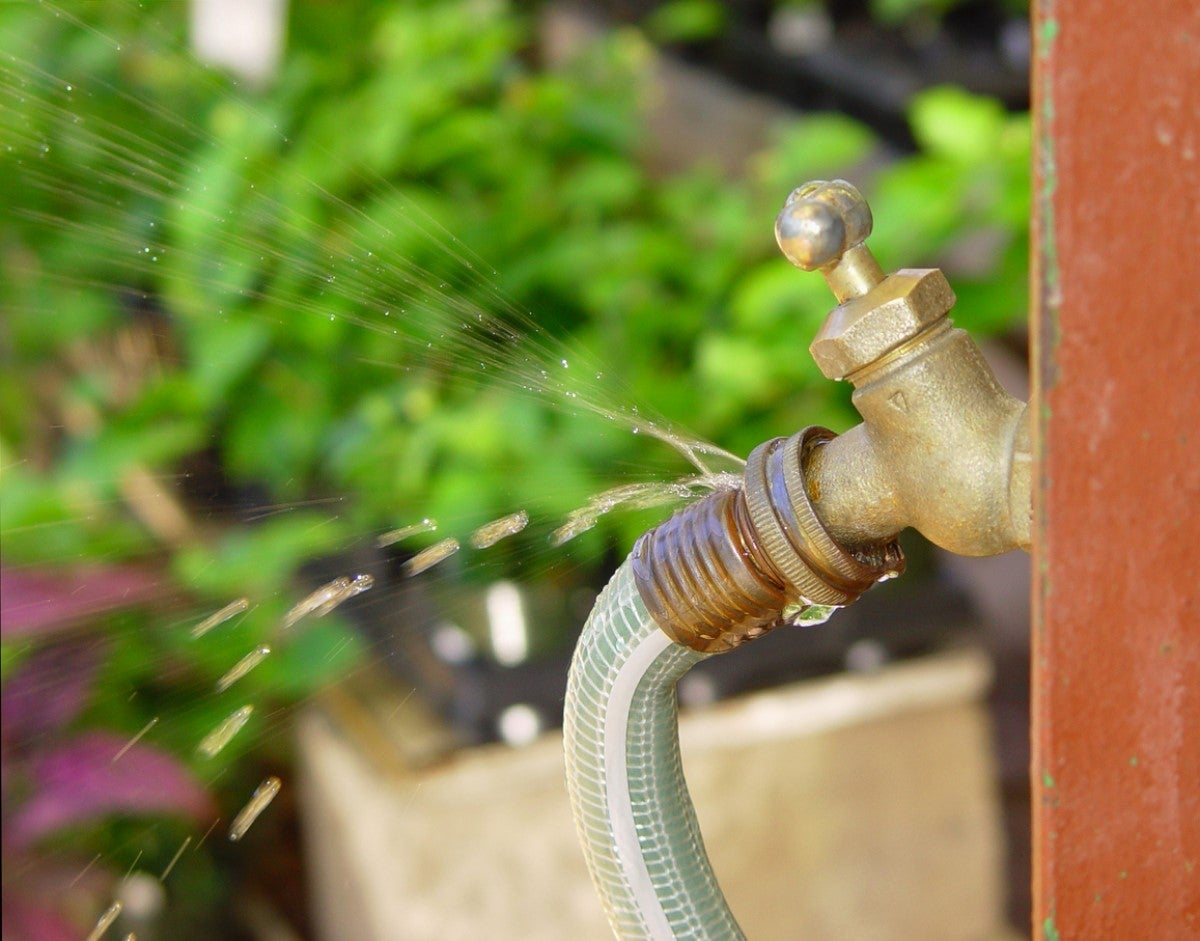The most commonly used gardening hose fittings are made of aluminum, brass, and stainless steel. You may remain indecisive while choosing the material for your hose fitting. So, it is important to know how each material is unique.
So, what are the differences between aluminum vs brass vs stainless steel hose fittings?
Aluminum hose fitting is more lightweight than brass and stainless steel. Stainless steel serves the most durability among the three metals. Also, stainless steel hose fittings are extremely resistant to water corrosion, galvanic corrosion, and pressure. Whereas, brass and aluminum will produce low to medium resistance. Aluminum hose fittings can handle higher pressure compared to stainless steel but brass is for lower pressure application.
There are more factors you should consider while choosing one hose fitting. This article contains a full-fill discussion of each and every factor. So, keep on reading!
Aluminum Vs Brass Vs Stainless Steel Hose Fittings: Quick Sneak Peek of the Comparison
Aluminum, brass, and stainless steel are all commonly used materials for hose fittings. Three of them consist of some particular factors. They have some similarities and dissimilarities.
| Factors | Aluminum | Brass | Stainless |
| Weight | Light | Heavier | Heavy |
| Durability | Good | Better | Best |
| Water Corrosion resistance | Good | Good | Best |
| Galvanic Corrosion Resistance | Poor | Good | Good |
| Pressure resistance | Low | Medium | High |
| Temperature resistance | Low | Medium | High |
| Operating flexibility | Easy | Easy | Harder |
| Cost | Cheapest | Cheap | Expensive |
Now it’s time to discuss them in a broader manner. You’ll figure out each and every factor that is important to consider. You can choose one based on your preferences.
Factor 1: Weight
Among the three, aluminum is the lightest, and stainless steel is the heaviest. Brass takes the spot between these two, being closer to steel.
The density of aluminum (2.7 g/cm3) is lower than that of brass (8.53 g/cm3) or stainless steel (8.05 g/cm3). Since aluminum has a lower density, it means that a given volume of aluminum will weigh less than the same volume of brass or stainless steel. So, it’s a great choice for gardening applications.
On the other hand, Brass hose fittings are typically quite heavier than aluminum fittings, and only 8% heavier than stainless steel. For gardening purposes, the difference is negligible. So, both of them can go head to head.
Factor 2: Durability
Durability is one of the considerable key factors of a hose. There are different levels of durability when it comes to aluminum, brass, and stainless steel hose fittings.
Aluminum hose fittings are relatively durable and can withstand moderate levels of pressure and wear. However, aluminum fittings (2.75 Mohs) are not as strong as brass (3.0 Mohs) or stainless steel (4.0 Mohs) and may be prone to cracking or breaking under heavy loads or extreme stress.
On the other hand, Brass hose fittings offer a higher level of durability than aluminum. Their strength allows them to withstand higher pressure and wear over time. Also, Brass lends itself well to customization and modification, as it is relatively easy to work with a Brass Camlock fitting contains high tensile strength and durability, yet it can’t win against a stainless steel one

Furthermore, the stainless steel hose fittings are the most durable of the three hoses. Due to its high-pressure tolerance, it can be used in industrial and heavy-duty applications where reliability and performance are essential.
Factor 3: Water Corrosion Resistance
Stainless steel provides the best resistance against water (both regular and saltwater) corrosion, while aluminum and brass perform moderately well.
You must consider water corrosion resistance while picking a hose fitting. Corrosion is one of the factors, why hose end sprayers not siphoning. So, it’s important to evaluate the water corrosion resistance of these 3 hoses. There are various degrees of corrosion resistance offered by aluminum, brass, and stainless steel.
Aluminum hose fittings have a good level of water corrosion resistance due to their natural oxide layer. Also, aluminum can become pitted when exposed to certain chemicals that compromise the structural integrity of the fitting.
Brass hose fittings also serve you good water corrosion resistance. Actually, the allotment of Zinc in the brass helps to protect the fitting from damage.

On the other hand, Stainless steel hose fittings offer the best water corrosion resistance of the three materials. This is due to the high levels of chromium in the alloy, which reacts with oxygen to form a thin layer of chromium oxide on the surface of the metal.
Factor 4: Galvanic Corrosion Resistance
According to the Galvanic Reaction chart, aluminum is the most active, brass is second, and steel comes third.
Metals should fit together in hose fittings, which can initiate galvanic corrosion. When two dissimilar metals come into contact with each other while submerged in water or saltwater, electrolysis occurs. So, you should choose a hose that can reduce the chances of galvanic corrosion.
Aluminum hose fittings are considered to be less resistant than brass or stainless steel when it comes to galvanic corrosion. It’s at the top of the galvanic series chart. So, it will easily show corrosive behavior after coming into contact with faucets that are usually made from copper, brass, bronze, etc.
In contrast, brass combines copper and zinc, which are highly inert metals that do not react easily with other metals. Then, stainless steel hose fittings have the best galvanic corrosion resistance.
But, galvanic corrosion will also be dependent on the material of the hose bib you will be connecting the hose to. If you have stainless steel tubing, then you should always use stainless steel fittings; and if you have copper tubing then you should use brass.

Factor 5: Pressure Resistance
Aluminum hose fittings (276-310 MPa) have a relatively low-pressure resistance compared to brass (338-469 MPa) and stainless steel (540-750 MPa). In high pressure or stress, aluminum can deform or crack more easily since it is a softer metal.
On the other hand, brass fitting offers a medium pressure resistance. Unlike aluminum, brass can withstand higher levels of pressure without deforming or cracking. But, Aluminum fittings can handle higher pressure than brass and reduce weight when an application has a moderate pressure rating
Finally, stainless steel hose fittings offer the highest level of pressure resistance of the three materials. The material stainless steel is very strong and durable and can withstand extremely high pressures without deforming or cracking.
Factor 6: Temperature Resistance
Aluminum has the lowest temperature resistance, while brass performs slightly better. Stainless steel has the highest range among the three.
Temperature resistance varies between aluminum, brass, and stainless steel hose fittings. Aluminum hose fittings come with the lowest temperature resistance among the three materials. Generally, aluminum fittings can withstand temperatures up to 400°F.
The temperature resistance of brass hose fittings is medium, as they can withstand higher temperatures than aluminum but not as high as stainless steel. Brass fittings can typically handle temperatures from – 325° to 400°F.
On the other hand, you’ll find the highest temperature resistance in Stainless steel hoses. A very high melting point and high heat resistance make stainless steel a highly heat-resistant material. Stainless steel fittings can typically handle temperatures up to around 800 degrees Fahrenheit.
Factor 7: Operating Flexibility
Flexibility of hose refers to its ability to bend and move without restricting the flow of fluid or gas. When choosing a hose, consider its operating flexibility. Aluminum hoses can be operated easily like brass hoses.
On the other hand, stainless steel is tougher and harder to operate than aluminum and brass.
Factor 8: Cost
Regarding the cost, stainless steel is the most costly one among aluminum, brass, and stainless steel hose fitting. Brass is a cheaper alternative to stainless steel. But, if you are looking for the cheapest one, choose aluminum.
Aluminum hose fittings cost around $8 to $11, and come in sizes between ½” to 8”. Brass ones have a price range of $18 to $20, with sizes from ½” and 6”. Stainless steel fittings come in the same size as aluminum, with a price tag of around $33 to $35.
So, Which One Is Better: Aluminum Vs Brass Vs Stainless Steel Hose Fittings
You should go for an aluminum fitting if your job requires a lightweight hose fitting. Because brass and stainless steel are heavier than aluminum. Since stainless steel is the most durable, you should choose this one, if you want to have a long-lasting fitting.
Then, a hose fitting’s water corrosion resistance is another factor to consider.. Regarding water corrosion resistance, stainless steel would be the best.
On the other hand, aluminum is the least resistant when it comes to galvanic corrosion compared to brass or stainless steel. So, you should pick one between brass and stainless steel considering this issue.
Again, brass and aluminum hoses are less resistant to pressure and temperature than stainless steel hoses. So, make sure the fitting is made of stainless steel since it needs to be highly temperature and pressure resistant.
However, the operation of steel hose fittings would be harder than brass and aluminum. So, these two would be better choices if you need an easy-to-operate fitting. For a budget-friendly option, aluminum would be great.
Lastly, if you’re looking for an overall all-rounder, Brass is the fine middle point among the trio. In low-budget scenarios, brass is the better choice where the application requires good corrosion resistance but allows for lower pressure.
This has been a trusted household material for hose fitting, preferred by experienced gardeners throughout the years. Alternatively, you can install sprinklers to reduce the hassle of watering with hose pipes. You should know recommended sprinkler run times if you decide to go for it.
Frequently Asked Questions (FAQs):
Is stainless steel or brass better for plumbing?
Yes, both stainless steel and brass are good choices for plumbing. Brass is known as the gold in the plumber industry. It resists corrosion, withstands heat, and fuses well. It is also less expensive than stainless steel, making it a popular choice for plumbing applications that require large quantities of fittings and valves.
What are the disadvantages of brass fittings?
Brass is a combination of Zinc and Copper which is why it’s very caustic to human health. Also, the color can change when copper is added. Then, you can’t get profitable by reselling the brass since it doesn’t have any resale value.
What is stronger aluminum or steel?
Aluminum is generally weaker than steel. It is because steel has a higher tensile strength than aluminum, thus able to withstand more forces and loads before it breaks. Furthermore, steel is denser than aluminum, which means that it can support heavier loads without warping or bending.
Conclusion
Hopefully, this article cleared the air about aluminum vs brass vs stainless steel hose fittings with a fair comparison. Durable and functional materials are used in three of the materials.
You have to decide which one is right for your project or product based on the factors that matter most to you. Three options will ensure that you receive high-quality material, regardless of which one you choose. Wishing you all the best in your endeavor!
- Why Are There Still No Tomatoes in My Tomato Plants? Let’s Fix the Issue! - July 13, 2023
- Water Propagation White Stuff on Roots: Everything You Should Know! - July 11, 2023
- String of Dolphins Drying Up: Solved! - July 11, 2023
